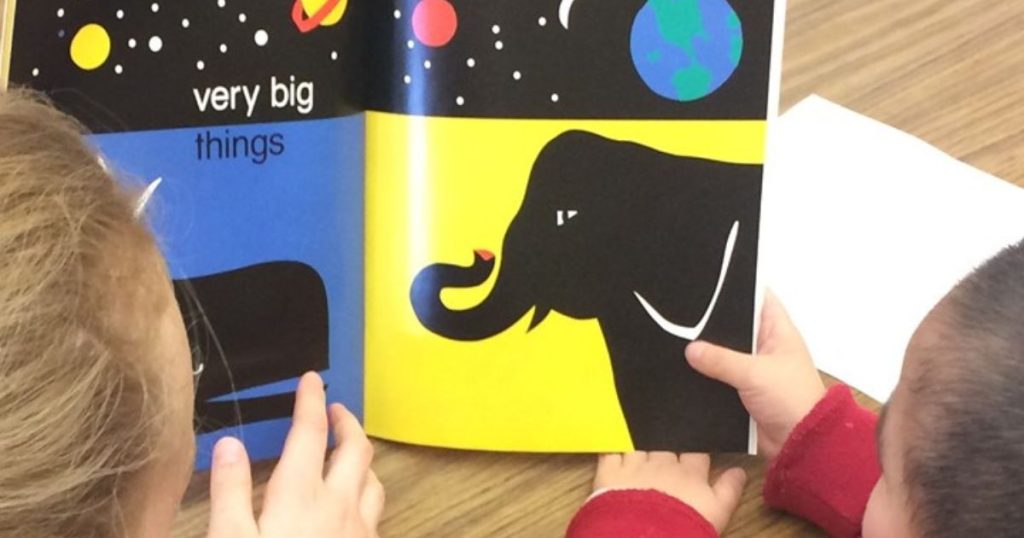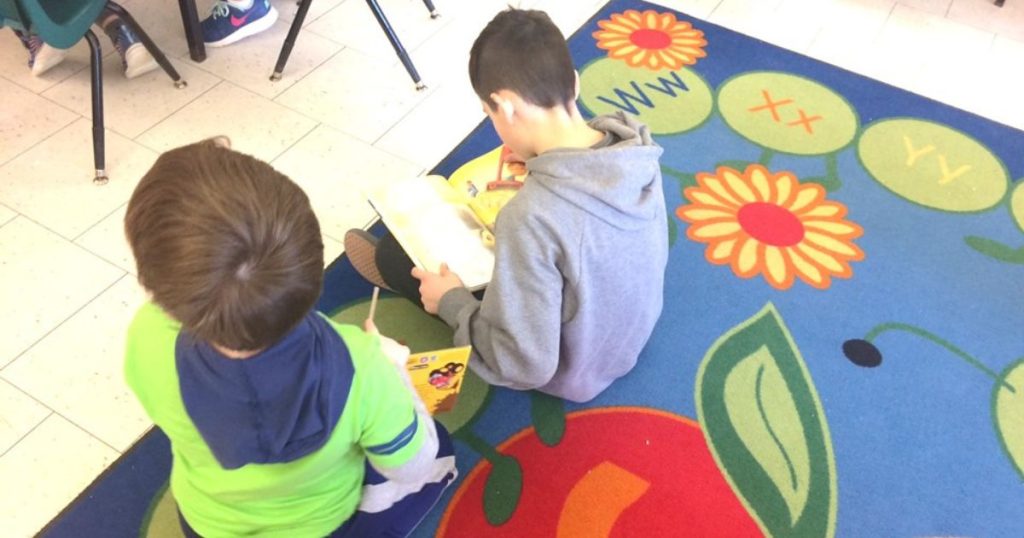When I was teaching kindergarten and first grade, the benefits of a Reading Buddies program for Big and Little Buddies were apparent beyond our time together.
My First Reading Buddies Program
My first kindergarten students had rotating 4th grade helpers before we ever started an official Reading Buddies program. Half my class didn’t speak English, and there was no washroom, sink or cubbies in my classroom!
These kids evolved into Reading Buddies as the year went on. The benefits of those Big Buddies to me and my students were immeasurable. They spoke Portuguese, knew some of my students’ families and were particularly helpful with the transition into school for my young students. I noticed how my kindies watched them, mimicked them, and loved listening to them read the stories they had chosen from the library.
Benefits of a Reading Buddies Program for Little Buddies
Following that first year, I was sold on the benefits of a regular Reading Buddies program. The older students came once a month to read with my kindergarten or grade 1 students. Sometimes we would do an additional activity if time allowed.
During our Reading Buddies time, I would circulate and make suggestions to older buddies to have certain students turn pages (for directionality practice), or talk about the pictures before reading the page to them. I could see how much the individual attention helped my early readers.
The Little Buddies Benefit from:
- Hearing stories read-aloud (modeling of reading fluency, phrasing and expression)
- Having conversations with an older student about topics that interest and involve them (extending their vocabulary and oral language abilities)
- Having regular opportunities to practice familiar reading with 1:1 assistance
- Enjoying fun, positive experiences with a ‘big kid’ who is now a recognizable face in the school community
Benefits of a Reading Buddies Program for Big Buddies
When I became a special education teacher (providing literacy support to students up to the third grade), I set up a Reading Buddies program between some of my third grade students and snacking kindergarten students. Half of my third graders were interested when I first suggested bringing their “most practiced” books to read to kindergarten friends, weekly, during recess. After the first month, I had to create a sign-up sheet!
The first set of Big Buddies were so excited about their new role, the rest wanted in. They had always had older Reading Buddies. Now they got to become them!
When participation is voluntary, both younger and older students benefit in so many ways!
The Big Buddies Benefit from:
- Further developing their own literacy skills
- Fostering leadership and problem-solving skills
- Improved self-confidence that comes from being looked-up to
- A very real and important reason to be responsible, and an opportunity to be ‘caught’ (and praised) for positive behavior
- Bragging rights
Ready to Start a Reading Buddies Program?
A Reading Buddies program promotes a higher interest and engagement in reading; improvement in social and communication skills, particularly for students learning English as a second language; and, most importantly, it’s just FUN!
Are you ready to start a Reading Buddies program at your school? I wrote this post with everything you need to know to get started. I’ve even created an entire year of low and no-prep Reading Buddies activities to make it super fun and easy!
I’d love to hear about your experiences with Reading Buddies!








The reading buddies program sounds like a great way to help kids learn how to socialize on top of encouraging them to learn and read. I like how you listed down the benefits that the “Big Buddies” get by being in this program. Although the “Little Buddies” have a lot to learn from the older kids, the Big Buddies can also develop new skills while in charge of a younger student.
Thank you so much, Heather. The benefits to the older buddies are often overlooked, but so important to highlight! There’s quote I love about that: “If you want to master something, teach it. A great way to learn is to teach.” Richard Feynman – theoretical physicist. That doesn’t even touch the social-emotional benefits!